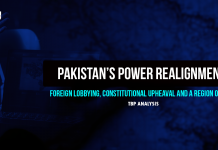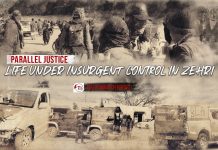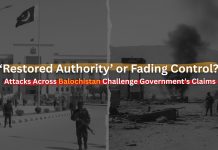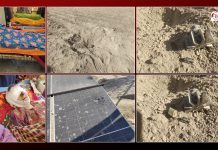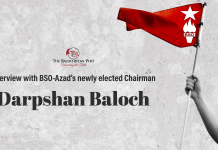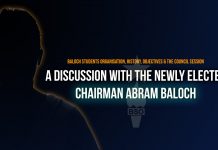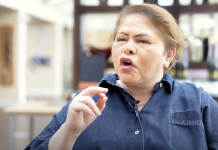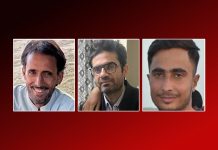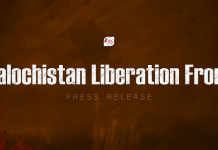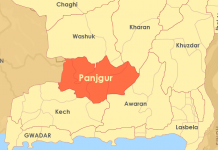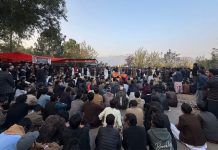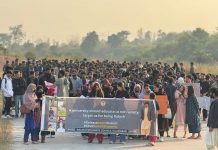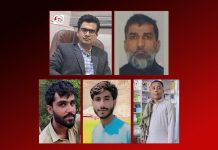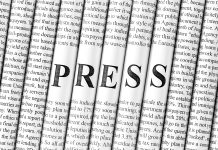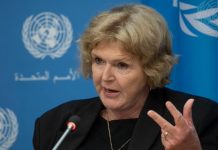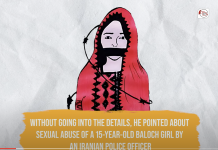Author: Hayr Buksh Baloch
There was an eerie silence on the road. Police barricades were being placed to halt anyone coming through. The mighty Provincial Assembly still had lights switched on. Candy wrappers, pamphlets, and torn newspaper rubbish were being blown by the soothing night breeze of Karachi. On the side of the road was a photograph. It had a footprint of a military styled boot, suggesting it was stepped on by a sturdy uniformed policeman. At a closer look of that photograph, one might be familiar with the faces of the two young men in that picture. It was the picture of the two new faces added to the long, winding list of forcefully abducted baloch missing persons. The faces of Doda Elahi and GamshadBaloch.
The two were students of the University of Karachi. They were kidnapped from their homes on the 7th of June in Karachi. Eyewitnesses claimed that men in plain clothes flanked by paramilitary vehicles pushed into their homes and forcefully took them away in the middle of the night. Relatives along with friends and activists staged a peaceful sit-in in front of the provincial assembly. They were adamant that their protest was a right that was guaranteed in the constitution.
But to their shock, what happened next was harrowingly traumatising.
The police attacked the peaceful protesters with baton. The footage that came out of the incident is even more traumatic. They violently assaulted the protesters, men and women alike, dragged pregnant women, and detained more than 20 people. It should be noted that all of this happened in the biggest metropolitan city of Pakistan, in front of the media and their cameras, and just a few yards away from the Press Club. No words could ever do justice to the inhumane and brutal assault on peaceful protesters. The barbarity of the Sindh Government and Sindh Police could dwarf the atrocities by Zia Ul Haq’s during his reign as the military dictator.
Unsurprisingly, this incident was not covered in most of the mainstream media. While peaceful protesters were being assaulted, the mainstream media in Pakistan was grappling with trivialities. Although social media, specially Twitter, was inundated with raw footages of the heinous attacks by the state, it did not garner enough attention, let alone any support, from the mass denizens as the percentile of national internet users is meagre. Hence, this incident inevitably failed to provoke the already numb population to question the authority of using forceful means to subvert the constitution.
But one would be forced to think: did Benazir Bhutto, the former and the only female Prime Minister of Pakistan, lay down her life so that under the leadership of his son, the Sindh Police would thrash peaceful protesters who were exercising their constitutional rights? The party that claims to be the stalwart of democracy, used tactics that could put military dictators to shame.
Shamelessly enough, the same party, as part of the federal government, is negotiating with Tehreek – e – Labaik Party (TLP) who infamously led one of the most violent protests in the last decade, burning cars, beating civilians and policemen, as well as warned to bring the country to a grinding halt. The federal government successfully held negotiations, kowtowed to their demands, and released all their detainees.
But let us stop for a moment and think: When the state genuflects at the alters of violent protesters while mercilessly assaults peaceful ones, what is the message that the state wants to send to the people of Balochistan?
The relentless and untiring efforts of Baloch protesters, led by mostly female leaders, will go down in history as one of the most inspiring struggle of civil rights. Until and unless all the missing persons are brought back to their homes, it is difficult to see these young Balochistanis quit their struggle. How would history remember the state of Pakistan is not hard to guess.

